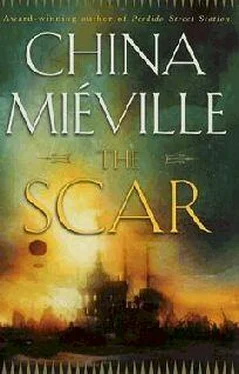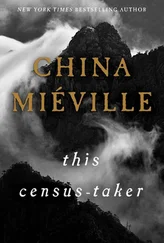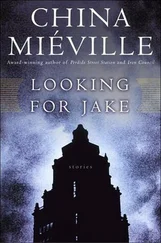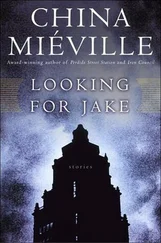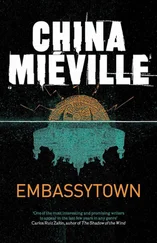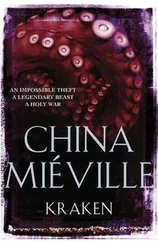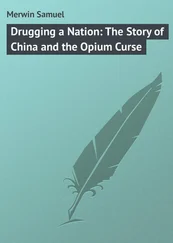It was a kind of hypocrisy, she vaguely acknowledged: New Year’s Eve had never meant anything to her before.
For the Armadans, it was Horndi, the beginning of another nine-day week, and a day that Bellis had free. She met Silas on the bare deck of the Grand Easterly .
He took her to the star’d-aft edge of Garwater, to Croom Park. He had been surprised that she had not visited it before, and as they entered it and passed deep into its byways, she could understand why.
The bulk of the park was a long strip, more than a hundred feet wide and almost six hundred long, on the huge body of an ancient steamer whose nameplate had long been effaced by nature. The greenery spread across broad, swaying bridges to two old schooners lined up back-to-back, almost parallel to the great ship. Fore of the steamer, it extended onto a hunkered little sloop with long-dead guns, part of the fabric of Curhouse riding, sharing the park between the two boroughs.
Bellis and Silas wandered tangled pathways, passing the granite statue of Croom, the pirate hero from Armada’s past. Bellis was overwhelmed.
Unknown centuries before, the architects of Croom Park had set to covering the fabric of the war-shattered steamer with mulch and loam. Eddying on ocean currents, there was no ground for Armadans to till or fertilize and, like their books and money, they had had to steal it. Even that, even their earth, their mud, was plundered over years, dragged in great trenches from coastal farms and forests, torn from bewildered peasants’ plots and taken back across the waves to the city.
They had let the ruined steamer rust and rot, and had filled its holed carcass with the soil they had stolen, starting in the forepeak and engine rooms and the lowest coal bunkers (deposits of coke still unused, packed once again in seams below tons of dirt), piling the earth around the moldering propeller shaft. They filled some of the big furnaces and left others half empty, encased them, metal air bubbles in the striae of marl and chalk.
The landscapers moved up to decks of cabins and staterooms. Where walls and ceilings had escaped injury, they perforated them raggedly, rupturing the integrity of the little rooms and opening passageways for roots and moles and worms. Then they filled the scraps of space with earth.
The ship was low in the water, kept buoyant by judicious air pockets and by its tethering neighbors.
Above the water, in the open air, layers of peat and dirt spread out and reclaimed the main deck. The raised bridge, the aftercastle and observation decks and lounges, became steep knolls skinned in topsoil. Abrupt little hills, they burst in tight curves of earth from the surrounding plateau.
The unknown designers had performed similar transformations on the three smaller wooden boats close by. That had been much easier than working on iron.
And then there was the planting, and the parkland had bloomed.
There were copses of trees across the steamer’s body, old and densely spaced, tiny conspiratorial forests. Saplings, and many midsize trees a century or two old. But there were also some massive specimens, ancient and huge, that must have been uprooted full-grown from wooded shorelines and replanted scores of years ago, to grow old aboard. Grass was everywhere underfoot, and cow parsley and nettles. There were cultivated flowerbeds on the Curhouse gunboat, but on the steamer’s corpse the woods and meadows of Croom Park were wild.
Not all the plants were familiar to Bellis. In its slow journeys around Bas-Lag, Armada had visited places unknown to New Crobuzon’s scientists, and it had plundered those exotic ecosystems. On the smaller ships were little glades of head-high fungus, that shifted and hissed as walkers passed through them. There was a tower covered in vivid red, thorned creepers that stank like rotting roses. The long forecastle of the star’d-most ship was out of bounds, and Silas told Bellis that beyond the intricately woven fence of briars, the flora was dangerous: pitcher plants of odd and unquantified power, wake trees like predatory weeping willows.
But on the old steamer itself, the landscape and the foliage were more familiar. One of its raised deck-hills was paved inside with moss and turf and made into sunken gardens. Lit and kept alive by bright gaslight and what little day came through dirt-caked portholes, plants of different themes filled each of the cabins. There was a tiny tundra garden of rocks and purple scrub; a desert full of succulents; woodland flowers and meadowland-all adjoining, all linked by a dim corridor knee-high in grass. In its sepia light, under warpaint of verdigris and climbing plants, plaques pointing to the mess and the heads and boiler rooms could still be read. They were crossed by paths well-worn by woodlice and ladybirds.
A little way from its entrance-a door in the hill-out in the air, Bellis and Silas walked slowly in the damp shade.
They had visited each of the four ships of the park. There were only a few other people in the green environs with them. On the aft-most of the vessels Bellis had stopped, shocked, and pointed across the gardens and the reclaimed rails of the deck, out over a hundred feet of ocean to the city’s edge. Tethered there, she had seen the Terpsichoria . The chains and ropes that bound it were clean. New bridges connected it to the rest of the city. An architectural skeleton of wood loomed from its main deck: a building site, foundations.
This was how Armada grew for its populace, swallowing up prey and reconfiguring them, rendering them into its own material like mindless plankton.
Bellis felt nothing for the Terpsichoria , had only contempt for those who felt affection for boats. But seeing her last link to New Crobuzon brazenly and effortlessly assimilated depressed her.
The trees around them were evergreen and deciduous in an unruly mix. Silas and Bellis walked through pines and the black claws of leafless oaks and ash. Old masts soared over the canopy like the most ancient trees in the forest, barked in rust, dangling ragged foliage of long-frayed wire rigging. Bellis and Silas walked in their shadows, and in the shadows of the wood, past grassy undulations broken by little windows and doors, where cabins had been effaced by earth. Worms and burrowing animals moved behind the cracked glass.
The steamer’s ivy-caked chimneys disappeared behind them as they moved into the heart of the wood, out of sight of the surrounding ships. They traced spiraling paths that wound back on themselves arcanely, seeming to multiply the space of the park. Blistered cowls broke from the ground, choked with brambles; roots and vines entrapped the capstans and coiled intricately through the guardrails of moss-cushioned ladders leading into blank hillsides.
In the shade of a cargo derrick become some obscure skeleton, Bellis and Silas sat in the wintery landscape and drank wine. As Silas rummaged in his little bag for a corkscrew, Bellis saw his bulging notebook inside. She picked it up and looked at him questioningly, and when he nodded his permission she opened it.
There were lists of words: the jottings of someone trying to learn a foreign language.
“Most of that stuff’s from The Gengris,” he said.
She turned slowly through the pages of nouns and verbs, and came to a little section like a diary, with dated entries written in a shorthand code she could make little of, words pared down to two or three letters, punctuation dispensed with. She saw commodity prices, and scribbled descriptions of the grindylow themselves: unpleasant little pencil sketches of figures with prodigious eyes and teeth and obscure limbs, flat eel-tails. There were heliotypes attached to the pages, executed furtively, it seemed, in dim light; unclear sepia tints, discolored and water-stained, the monstrosity of the figures they depicted exaggerated by blisters and impurities in the paper.
Читать дальше
